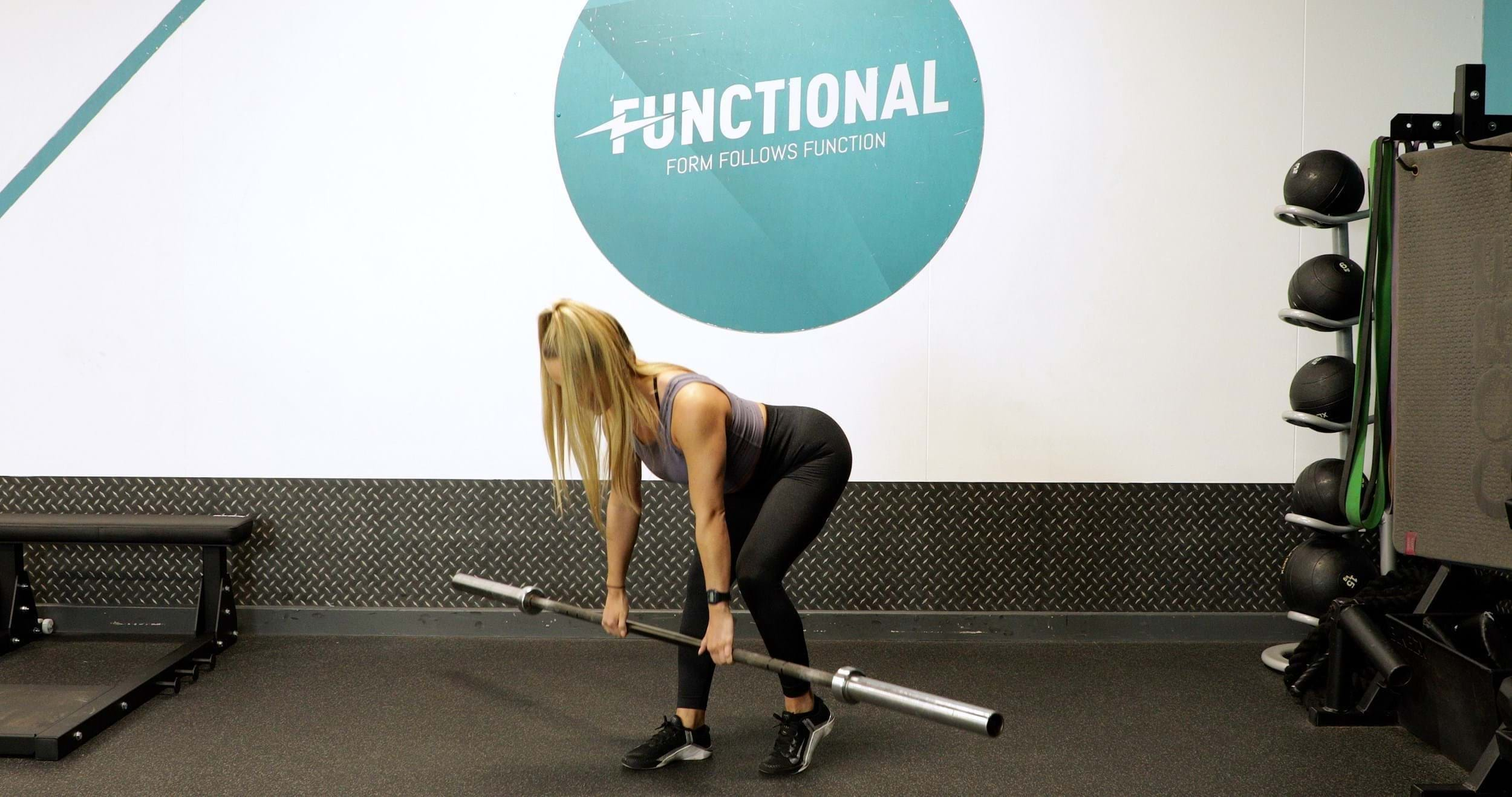B-Stance Deadlifts
What Is A B-Stance Deadlift?

Jump Straight To B-Stance Deadlift Instructions
B-stance deadlifts refer to a variation of the exercise that adopts a staggered stance positioning, with the leg in front acting as the working leg and taking on most of the weight, and other leg supporting.
The B-stance is a great deadlift regression for those who find the single leg deadlift a little too challenging. While it's not a completely unilateral movement as the supporting leg provides assistance, the working leg is forced to work harder, which means this deadlift can still help to address muscle imbalances and build single leg strength
The B-stance deadlift closely replicates that of a Romanian deadlift and follows the same movement pattern, with just the foot positioning altering. You can opt for a barbell or dumbbells when performing the b-stance deadlift, just make sure you choose a weight that allows you to move with control and stability.
This movement will target the glutes, hamstrings, and erector spinae, while also enhancing balance and coordination, and improving single leg strength.
Check out our other deadlift variations: conventional deadlifts, Romanian deadlifts, sumo deadlifts, dumbbell deadlifts, single leg deadlifts, rack pulls,
Commonly Asked Questions On B-Stance Deadlifts
B-stance deadlifts target the muscles of the posterior chain. Like the RDL, B-stances will primarily hit the hamstrings, glutes, and erector spinae. This movement will also challenge your coordination, balance, and single leg strength as it requires one side of the body to lift most of the weight.
The B-stance deadlift provides a middle ground between unilateral exercises and bilateral exercises. The staggered stance of the B-stance means that the working leg can be challenged further than with a bilateral RDL, as the supporting leg does not work as hard, but is less challenging than a single leg deadlift as the supporting leg helps with balance.
It’s a great regression for those who want to work up to a single leg deadlift. The B-stance can be loaded heavier than the single leg variation.
The B-stance deadlift is the same movement pattern as the Romanian deadlift, but with a staggered stance. We break this down step by step below.
B-Stance Deadlift Tips
If you’re new to the B-stance deadlift it’s important to choose a manageable weight as going too heavy will impact form and is more likely to cause an injury. While you may feel confident with the Romanian deadlift, you’ll be unable to lift as heavy with the B-stance, especially as you require greater balance.
As with other deadlift variations, the B-stance deadlift involves the hip hinge movement to place the load on the hamstrings and glutes. We’d advise mastering your hip hinge and practising bilateral Romanian deadlifts before progressing to B-stance deadlifts so that you can build lower body strength and understand proper form.
To ensure that most of the load is being lifted by your working leg, allow most of your weight to stay on this side and use your other leg just for balance purposes. If you find you’re struggling with stability, start with an RDL before gradually moving one foot a little further back until you’re in the correct position B-stance position.
How To Do A B Stance Deadlift
Holding a dumbbell in each hand or a barbell with a pronated grip, take a shoulder width stance with your toes pointed straight ahead. Once you feel stable, shift your weight into one foot and take a small step back with the other so that your toes are in line or just behind the heel of your working foot. Lift the heel of your non-working foot off the ground so that you’re balancing on the ball of this foot, with most of the weight placed on the working foot.
Once you’ve found your stance position, keep your grip on the dumbbells/barbell strong before pinning your shoulders back and together as if trying to hold a pencil between them. Your set up is now complete and you’re ready to deadlift! Keeping the dumbbells/barbell as close to your working leg as possible throughout the lift, take a deep breath in, allowing your stomach to push outwards and your core to become rigid.
Keeping a soft bend in the knees, lower the dumbbells/barbell by pushing your hips back as far as they will go. Remember to keep your weight shifted onto the working leg.
Once your hips cannot go back any further (this is usually when the dumbbells/barbell reach between just below the knee and mid shin), reverse the movement by pushing your hips forward, maintaining your foot position throughout. Try not to push your hips too far forward as this will place unnecessary stress on your lower back!
Revisit steps 2 and 3 to perfect your position before moving to the next rep.
If you’re not sure if any of the above exercises are suitable for you, please consult your doctor before you start it. Need guidance on how to perform the exercise? Ask a personal trainer at your gym.